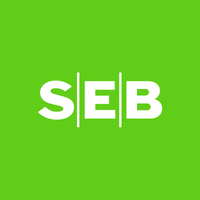The Strategic Dance of Share Buybacks: Attendo and H&M Take Center Stage
October 28, 2024, 11:52 pm
In the world of finance, share buybacks are akin to a well-choreographed dance. Companies step onto the stage, poised to reclaim their own shares, adjusting their capital structures with precision. Recently, two prominent players, Attendo and H&M, have taken bold steps in this intricate ballet, showcasing their strategies to enhance shareholder value and fortify their market positions.
Attendo, a leading care company in the Nordics, has announced a share buyback program with a maximum budget of SEK 150 million. This decision, made by the Board of Directors, reflects a calculated move to optimize the company’s capital structure. The buyback will commence on October 25, 2024, and run until February 6, 2025. Attendo’s approach adheres to the EU Market Abuse Regulation and the Safe Harbour Regulation, ensuring compliance while executing its strategy.
The numbers tell a compelling story. Attendo currently holds 5,216,369 of its own shares, out of a total of 160,103,190. This buyback program is not just a financial maneuver; it’s a statement of confidence in the company’s future. By repurchasing shares, Attendo aims to bolster its stock price and signal to investors that it believes in its own growth potential.
Meanwhile, H&M, the fashion giant, is also making waves with its own buyback initiative. Between October 21 and October 25, 2024, H&M repurchased 629,873 of its B shares as part of a larger SEK 1 billion program initiated in late September. This move is not merely about numbers; it’s about reinforcing the brand’s commitment to its shareholders. H&M’s buyback program is set to conclude by November 26, 2024, and like Attendo, it operates under the same regulatory frameworks.
The data from H&M’s recent transactions reveals a steady rhythm. Over the course of the week, the company executed daily purchases, accumulating a total of 2,899,886 shares since the program began. The weighted average share price hovered around SEK 172.85, showcasing H&M’s strategic approach to timing and pricing. Each transaction is a calculated step, aimed at enhancing shareholder value while maintaining market stability.
Both companies are navigating the same regulatory waters, yet their motivations may differ. Attendo’s buyback is likely driven by a desire to stabilize its share price amid market fluctuations, while H&M’s actions reflect a robust strategy to return capital to shareholders and signal confidence in its operational resilience. In a market that can often feel like a rollercoaster, these buybacks serve as a safety harness for investors.
The implications of these buybacks extend beyond immediate financial metrics. They send a message to the market: these companies are not just surviving; they are thriving. For Attendo, this is particularly significant as it operates in the care sector, where stability and trust are paramount. The company’s commitment to its values—care, commitment, and competence—shines through its financial decisions.
H&M, on the other hand, is a beacon of fashion and sustainability. Its buyback program aligns with its mission to offer quality at the best price. By investing in its own shares, H&M is reinforcing its brand promise to deliver value to its customers and shareholders alike. This dual focus on sustainability and profitability is a delicate balance, but H&M seems to be managing it with finesse.
As we observe these developments, it’s essential to consider the broader context. Share buybacks have become a popular tool for companies looking to enhance shareholder returns. However, they can also spark debates about the allocation of capital. Critics argue that funds used for buybacks could be better spent on innovation, employee wages, or community initiatives. Yet, for many companies, including Attendo and H&M, buybacks are a way to signal strength and confidence in uncertain times.
In conclusion, the share buyback programs of Attendo and H&M are more than just financial strategies; they are reflections of each company’s identity and vision. Attendo’s commitment to care and stability resonates through its buyback initiative, while H&M’s focus on fashion and sustainability shines brightly in its approach. As these companies continue their dance in the market, investors will be watching closely, eager to see how these moves play out in the long run. The stage is set, and the performance is just beginning.
Attendo, a leading care company in the Nordics, has announced a share buyback program with a maximum budget of SEK 150 million. This decision, made by the Board of Directors, reflects a calculated move to optimize the company’s capital structure. The buyback will commence on October 25, 2024, and run until February 6, 2025. Attendo’s approach adheres to the EU Market Abuse Regulation and the Safe Harbour Regulation, ensuring compliance while executing its strategy.
The numbers tell a compelling story. Attendo currently holds 5,216,369 of its own shares, out of a total of 160,103,190. This buyback program is not just a financial maneuver; it’s a statement of confidence in the company’s future. By repurchasing shares, Attendo aims to bolster its stock price and signal to investors that it believes in its own growth potential.
Meanwhile, H&M, the fashion giant, is also making waves with its own buyback initiative. Between October 21 and October 25, 2024, H&M repurchased 629,873 of its B shares as part of a larger SEK 1 billion program initiated in late September. This move is not merely about numbers; it’s about reinforcing the brand’s commitment to its shareholders. H&M’s buyback program is set to conclude by November 26, 2024, and like Attendo, it operates under the same regulatory frameworks.
The data from H&M’s recent transactions reveals a steady rhythm. Over the course of the week, the company executed daily purchases, accumulating a total of 2,899,886 shares since the program began. The weighted average share price hovered around SEK 172.85, showcasing H&M’s strategic approach to timing and pricing. Each transaction is a calculated step, aimed at enhancing shareholder value while maintaining market stability.
Both companies are navigating the same regulatory waters, yet their motivations may differ. Attendo’s buyback is likely driven by a desire to stabilize its share price amid market fluctuations, while H&M’s actions reflect a robust strategy to return capital to shareholders and signal confidence in its operational resilience. In a market that can often feel like a rollercoaster, these buybacks serve as a safety harness for investors.
The implications of these buybacks extend beyond immediate financial metrics. They send a message to the market: these companies are not just surviving; they are thriving. For Attendo, this is particularly significant as it operates in the care sector, where stability and trust are paramount. The company’s commitment to its values—care, commitment, and competence—shines through its financial decisions.
H&M, on the other hand, is a beacon of fashion and sustainability. Its buyback program aligns with its mission to offer quality at the best price. By investing in its own shares, H&M is reinforcing its brand promise to deliver value to its customers and shareholders alike. This dual focus on sustainability and profitability is a delicate balance, but H&M seems to be managing it with finesse.
As we observe these developments, it’s essential to consider the broader context. Share buybacks have become a popular tool for companies looking to enhance shareholder returns. However, they can also spark debates about the allocation of capital. Critics argue that funds used for buybacks could be better spent on innovation, employee wages, or community initiatives. Yet, for many companies, including Attendo and H&M, buybacks are a way to signal strength and confidence in uncertain times.
In conclusion, the share buyback programs of Attendo and H&M are more than just financial strategies; they are reflections of each company’s identity and vision. Attendo’s commitment to care and stability resonates through its buyback initiative, while H&M’s focus on fashion and sustainability shines brightly in its approach. As these companies continue their dance in the market, investors will be watching closely, eager to see how these moves play out in the long run. The stage is set, and the performance is just beginning.

